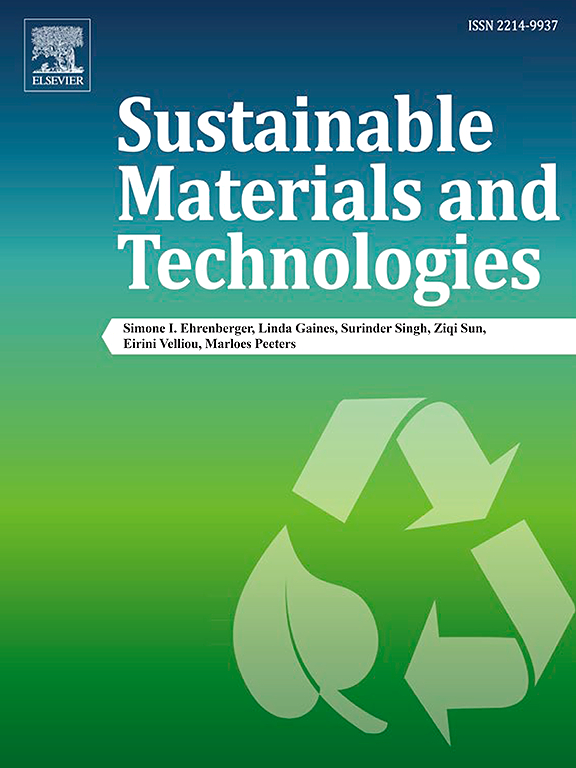Rechargeable cement-based solid-state nickel-iron batteries for energy storage of self-powered buildings
IF 8.6
2区 工程技术
Q1 ENERGY & FUELS
引用次数: 0
Abstract
The burgeoning need for sustainable and efficient energy storage solutions in the construction sector has spurred the exploration of innovative materials and technologies. This study presents the development and characterization of rechargeable cement-based solid-state nickel‑iron batteries designed for the energy storage of self-powered buildings. The cement-based electrolyte system incorporates cement, silica sand, ion exchange resin, and alkaline solution, optimized for high ionic conductivity. Nickel and iron electrodes were prepared via electroplating on carbon fiber mesh and nickel foam substrates. Extensive electrochemical testing, including cyclic voltammetry, electrochemical impedance spectroscopy, and charge-discharge evaluations, along with scanning electron microscopy and energy dispersive X-ray spectroscopy analyses, were conducted to assess battery performance. The results demonstrated that the nickel foam electrodes significantly outperformed the carbon fiber mesh electrodes in terms of discharge capacity, efficiency, and energy density. Notably, the cement-based batteries achieved a maximum average energy density of over 11 Wh/m2 over 30 cycles. The study concluded that the robust and interconnected structure of the nickel foam substrate enhances electrochemical activity and ion transport, making it a superior electrode material for cement-based batteries. This research offers promising insights into integrating cement-based batteries into self-sustaining energy systems for buildings, highlighting the potential for practical applications in energy storage.
用于自供电建筑的可充电水泥基固态镍铁电池
建筑行业对可持续和高效能源储存解决方案的需求不断增长,推动了对创新材料和技术的探索。本研究介绍了可充电水泥基固态镍铁电池的开发和特性分析,该电池专为自供电建筑的能源储存而设计。水泥基电解质系统由水泥、硅砂、离子交换树脂和碱性溶液组成,并针对高离子导电性进行了优化。镍和铁电极是通过在碳纤维网和泡沫镍基板上电镀制备的。为评估电池性能,进行了广泛的电化学测试,包括循环伏安法、电化学阻抗光谱法和充放电评估,以及扫描电子显微镜和能量色散 X 射线光谱分析。结果表明,泡沫镍电极在放电容量、效率和能量密度方面明显优于碳纤维网状电极。值得注意的是,水泥基电池在 30 次循环中的最大平均能量密度超过了 11 Wh/m2。研究得出的结论是,泡沫镍基板的坚固和互连结构增强了电化学活性和离子传输,使其成为水泥基电池的优质电极材料。这项研究为将水泥基电池集成到建筑物自持能源系统中提供了前景广阔的见解,凸显了其在能源储存领域的实际应用潜力。
本文章由计算机程序翻译,如有差异,请以英文原文为准。
求助全文
约1分钟内获得全文
求助全文
来源期刊

Sustainable Materials and Technologies
Energy-Renewable Energy, Sustainability and the Environment
CiteScore
13.40
自引率
4.20%
发文量
158
审稿时长
45 days
期刊介绍:
Sustainable Materials and Technologies (SM&T), an international, cross-disciplinary, fully open access journal published by Elsevier, focuses on original full-length research articles and reviews. It covers applied or fundamental science of nano-, micro-, meso-, and macro-scale aspects of materials and technologies for sustainable development. SM&T gives special attention to contributions that bridge the knowledge gap between materials and system designs.
 求助内容:
求助内容: 应助结果提醒方式:
应助结果提醒方式:


